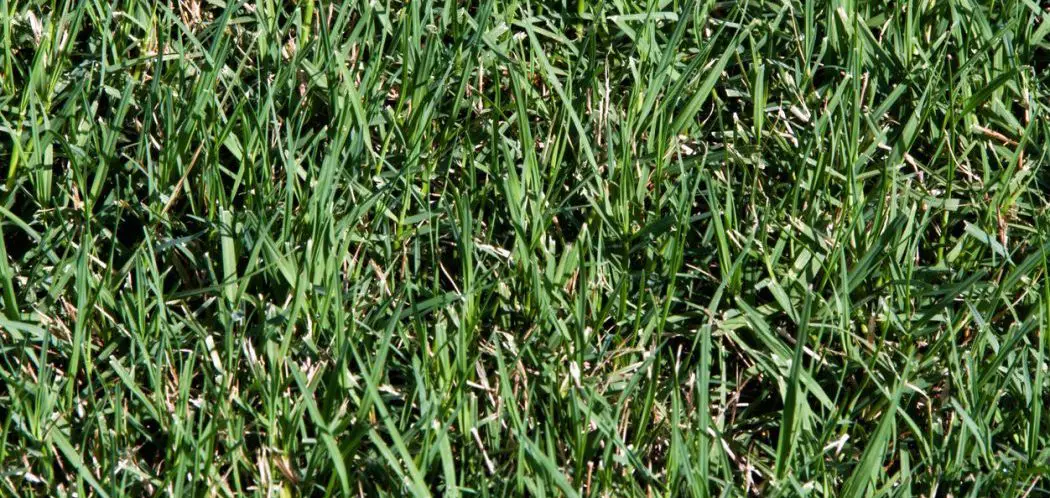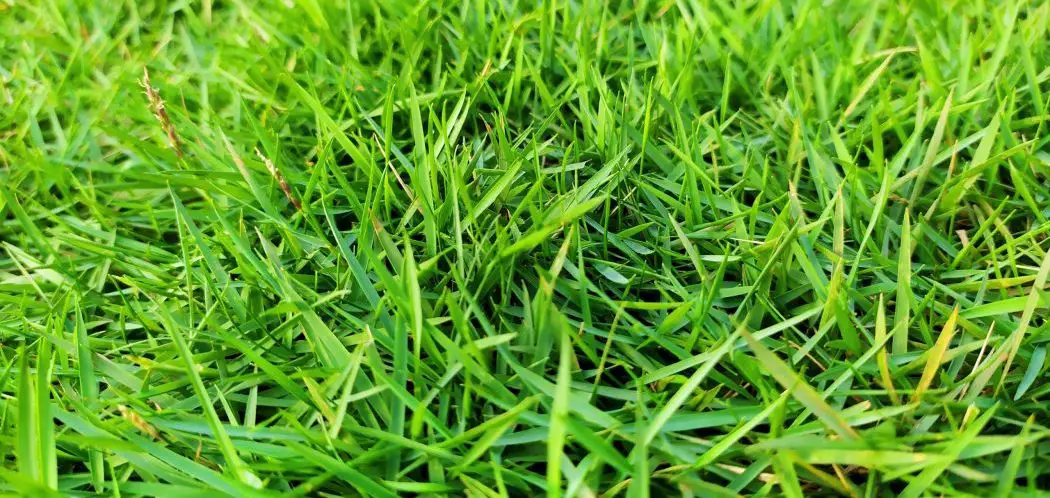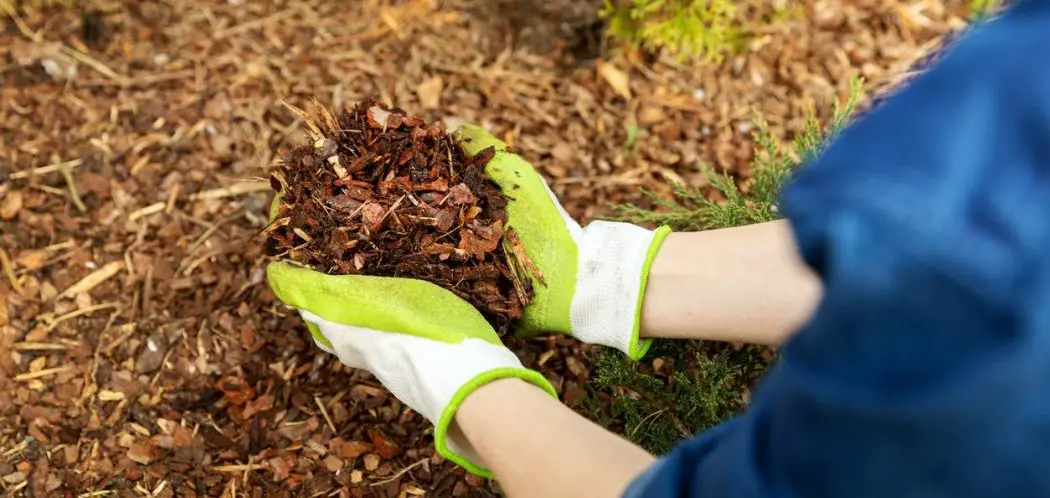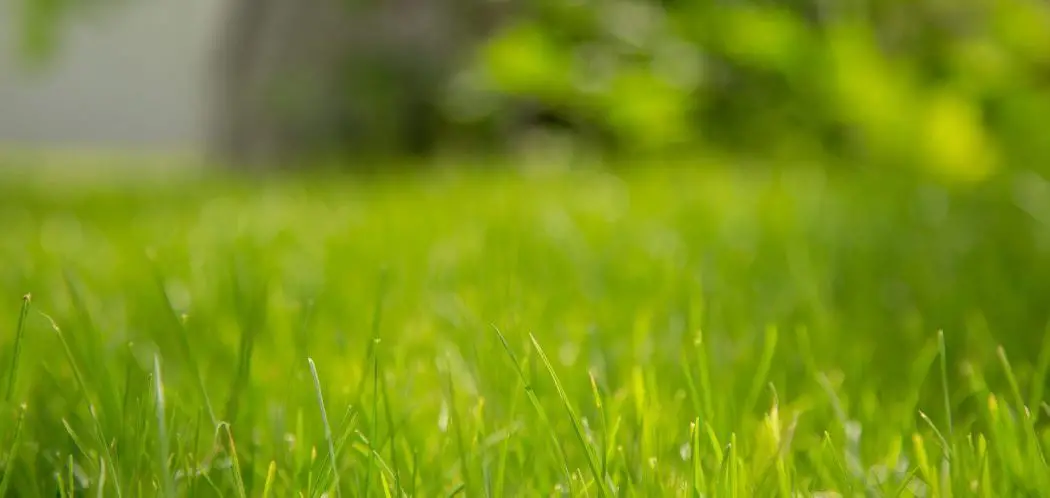Many people want to know what kind of grass to plant in their lawn. Two popular options are Tall Fescue and Bluegrass. Although they are both cool weather grasses, you will want to understand the differences that separate them from each other.
This will help you choose the one that is best in your yard. They look different, and they have different maintenance requirements. Continue reading to learn all about them so that you can make an informed decision.
Tall Fescue
Tall Fescue, or Festuca arundinacea, is a type of grass that was brought to America from Europe and Asia.
It does well in temperate regions with humidity, and it grows up to 16 inches tall. It can handle wet soil, and it doesn’t need as much direct sunlight as other grasses.
It tolerates traffic well, and it can be used with other species of grass. It is green, and it forms rough bunches of turf when left on its own. It does best when the pH of the soil is between 5.4 and 6.2, and it has an extensive root system that is fibrous. It has smooth circular stems, and the seeds are oval and tan in color.
Bluegrass
Bluegrass, also called Kentucky Bluegrass, is known by the scientific name Poa pratensis. It can grow to a length of 18 to 24 inches, and the tip of the leaf is shaped like a canoe. In the spring, it will develop new leaves in every 10-day period, and this extends to 22 days in the summer and the fall. The length of the leaf blade is determined by the length of the day, so the grass grows longer during the summer and shorter in the fall. It has rhizomes that split up from the leaf axil near the surface of the soil, and the rhizomes grow down into the soil and branch out as they develop.
What Is the Difference Between Tall Fescue and Bluegrass?
These two grasses actually look different. Tall Fescue grass blades are smooth, shiny, and flat, and they have noticeable ribs on the top surface. The stems can grow three to four feet tall. Kentucky Bluegrass, on the other hand, has leaves that are 6 to 12 inches long, and they are shaped like a boat. The leaves are smooth and soft, and they are between ⅛” and ¼” wide.
Tall Fescue handles traffic better, and it requires less water than Bluegrass. It only needs around one inch of water each week, whereas Bluegrass needs a minimum of two inches of water each week. Tall Fescue also resists weeds in the summer, while Bluegrass is susceptible to them. Both grasses can tolerate shade, but Bluegrass needs at least eight hours of direct sunlight, while Tall fescue only needs four. Finally, Tall fescue needs one pound of nitrogen fertilizer for every 1,000 square feet, while Bluegrass needs three to six pounds for the same area. Bluegrass is higher maintenance, and it doesn’t handle traffic as well.
Water Requirements for Tall Fescue Versus Bluegrass
Both of these grasses require water, but Bluegrass needs almost twice as much as Tall Fescue. You need to make sure that Tall Fescue gets one inch of water each week, while Bluegrass will need two inches during the same period. If it is hot and dry in the middle of the summer, you may need to give Bluegrass even more water to survive.
Fertilizer Requirements for Tall Fescue Versus Bluegrass
Another difference between these two types of grass is their fertilizer requirements. Tall Fescue needs one pound of nitrogen fertilizer for every 1,000 square feet of grass. Bluegrass needs more. You need to plan on three to six pounds of nitrogen fertilizer for the same space. You will want to do a soil test no matter what kind of grass you plan to grow. This will help you decide what the best fertilizer will be for your grass.
Shade Tolerance for Tall Fescue Versus Bluegrass
Both of these types of grass can tolerate shade, but they have different sunlight requirements. Kentucky Bluegrass needs a lot more sunlight, as it requires a minimum of eight hours a day to grow well and thrive. Tall Fescue will do well with four hours of direct sunlight a day. If you have a very shady yard, this is a serious consideration. In addition, Tall Fescue can tolerate traffic much better than Bluegrass. If you anticipate that you will be active in your yard, you might consider Tall Fescue over Bluegrass.
How They grow: Tall Fescue Versus Bluegrass
When you plant these two types of grass, you will find that Bluegrass takes longer to germinate. In addition, Bluegrass forms dense sods, and they will spread over areas to cover them. Tall Fescue grows more quickly, but it grows in sods that are in bunches. You will need to overseed to prevent bare patches from showing up.
You will also find that Bluegrass is more vulnerable when it comes to diseases and weeks in the summer or in hot weather. Tall Fescue can tolerate some heat, and it is able to resist weeds, most notably crabgrass. It also is resistant to diseases in the summer. Bluegrass is a beautiful rich color of green, but it requires more care and maintenance, while Tall Fescue is a lighter green, but you won’t have to work as hard to keep it.
How to Choose the Best One for Your Lawn
You will want to consider where you live, how much shade the lawn has, and how much traffic the lawn will get, among other things. It is important to make sure that you choose grass that can tolerate its intended use because you want it to thrive during the year. If you have a mixture of shady spots and other parts of your lawn will get direct sunlight for much of the day, you can actually use both of these grasses together. The best way to choose is to learn about each grass and choose the one that will do best in your yard.






